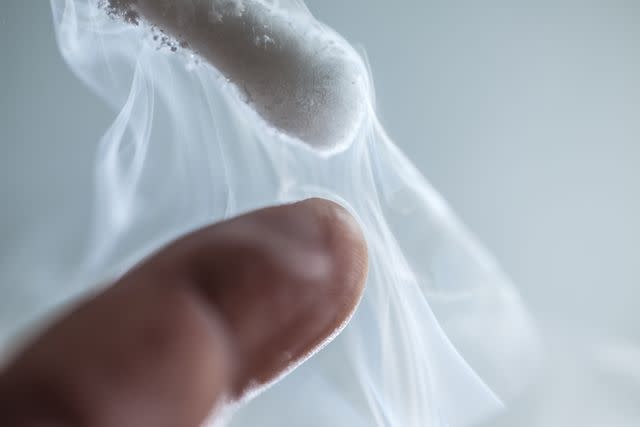How Warts Are Treated
Warts can be an uncomfortable and embarrassing skin condition. Fortunately, many treatments are available to help remove or reduce the size and appearance of warts.
This article will examine various ways to treat a wart, including home remedies, over-the-counter therapies, prescriptions, surgeries, medications, and other alternative treatments.

CasarsaGuru / Getty Images
Home Remedies and Lifestyle
Some warts may be treatable with home remedies and lifestyle changes. However, reaching out to a healthcare provider before treating your wart is still a good idea. Home remedies are generally safe, inexpensive, and have few side effects, and they are often worth trying before seeking more aggressive medical interventions.
Apple Cider Vinegar
Although no direct scientific research shows that apple cider vinegar (ACV) effectively treats warts, some believe the acetic acid in ACV may destroy the wart, similar to salicylic acid. However, there are some rare instances of chemical burns using vinegar directly on the skin, so discuss this method with your healthcare provider first.
Garlic
Garlic has a long history of medicinal value for its antiviral and anticarcinogenic effects. A 2018 clinical study found that 10% garlic extract on male genital warts has a similar impact to cryotherapy (freezing them).
Duct Tape
Though an unlikely remedy, duct tape occlusion therapy is a potential remedy for warts. This method involves applying a small piece of duct tape directly to the wart and leaving it in place for four to seven days. When the duct tape is removed, the surrounding skin is cleaned with soap and water.
An emery board (a type of nail file) can help remove dry skin from the wart. Finally, another piece of duct tape is applied after 12 hours of being open to the air. The cycle is repeated for four to six weeks.
Pineapple
Bromelain extract, a protein-digesting enzyme, comes from the fruit or stem of pineapple and is known for its anti-inflammatory and immune-modulating properties. Although there is some evidence that pineapple may help heal warts, there are no current scientific studies with enough evidence to support its use.
These unconventional treatments can be tried, but even when left alone, warts will usually disappear as soon as the body has built up enough of an immune response against the virus (human papillomavirus, HPV) that causes them.
Lifestyle changes that can help prevent the spread of warts include:
Avoiding contact with people who may have warts
Keeping the affected area clean, dry, and covered
Wearing shoes in areas where there is a chance of transmission
Over-the-Counter (OTC) Therapies
The following are effective OTC therapies for warts:
Hydrogen Peroxide
A 2020 study found that 3% or 6% hydrogen peroxide solution is a safe and effective treatment for nongenital warts.
Salicylic Acid
Salicylic acid is a home remedy sometimes used to treat warts and comes in a gel, liquid, or plaster pad. You should soak the wart in warm water and apply salicylic acid to the wart every day.
Stop medications containing salicylic acid and get medical assistance if you have the following symptoms:
Severe headache
Ringing in the ears or difficulty hearing
Severe stomach pain
Shortness of breath
Vomiting or diarrhea
Prescriptions
Prescription medicines for wart removal include medications such as:
Condylox (podofilox)
Tretinoin (retinoic acid)
Aldara (imiquimod)
These medications are applied directly to the skin.
Surgeries and Specialist-Driven Procedures
A dermatologist may recommend an in-office procedure for warts that do not respond to more conservative treatment. They can also ensure that the wart-removal procedure is performed safely and effectively.
These are some of the in-office wart-removal treatment methods:
Cantharidin
Cantharidin is a topical (on the skin) compound that works by causing a reaction in the skin that forces the wart to dry up and peel off. This medicine is typically applied directly to the wart with a cotton swab or brush.
Cryotherapy
Cryotherapy is a noninvasive treatment for warts that uses freezing temperatures to destroy the cells in the wart. This method involves the application of liquid nitrogen or cryogen to the wart, which kills the virus responsible for causing it.
Chemical Peels
A chemical peel procedure involves applying a chemical solution to the wart, which causes it to blister and eventually shed off. It may take several treatments for warts to be removed entirely.
Excision
Wart excision is a surgical procedure that involves cutting out the entire wart. A healthcare provider numbs the area around the wart and then uses a scalpel to remove it from the surrounding skin.
Electrosurgery and Curettage
Electrosurgery uses a high-frequency electric current to burn off the wart tissue and stop its growth. Curettage involves scraping away the wart tissue with a sharp instrument.
Complementary and Alternative Medicine (CAM) Therapies
CAM therapies are sometimes used with other medical treatments to treat warts. For example, one 2021 case study found acupuncture to be an effective treatment for HPV-related warts through the modulation of the immune system.
Another 2021 research article examined the relationship between stress and skin diseases and the impact of mind/body therapies such as cognitive behavioral therapy (CBT), hypnotherapy, and meditation on skin health.
Although there may be some anecdotal evidence, insufficient scientific evidence suggests that stress can cause or worsen warts. People may sometimes experience increased wart growth when under higher stress levels. However, warts typically develop from other factors that may or may not be related to stress, such as skin trauma or weakened immunity.
Summary
With patience, persistence, and help from your healthcare provider, it is possible to successfully treat warts and help restore the appearance of your skin. Fortunately, you can try several over-the-counter or at-home treatments as a first step. Prescription medications or an in-office procedure are also potential options for stubborn warts that don't respond to treatment.
You should see a dermatologist if a wart is painful or will not go away, or if you have many warts. Treatments typically depend on the person's age, health, and type of wart.

